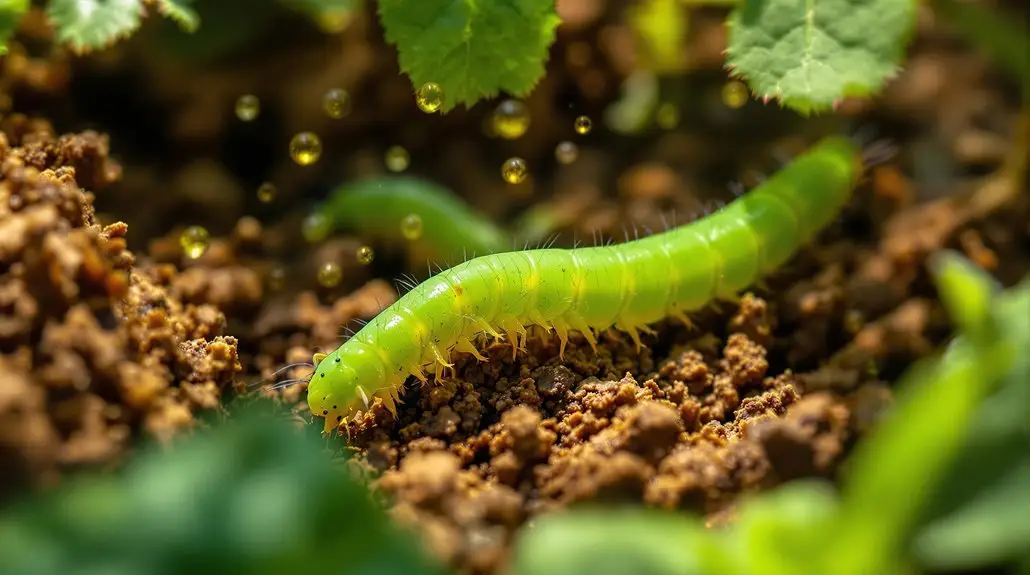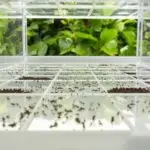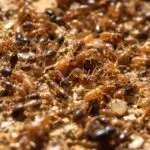Researchers, including Zihao Li and colleagues, found that adding cinnamon oil markedly improves the toxicity of rotenone against *Spodoptera litura* larvae. This synergistic effect enhances rotenone’s bioavailability, allowing it to penetrate essential tissues like the brain and ventral nerve cord more effectively. The addition of cinnamon oil not only increases the efficacy of rotenone but also reduces its necessary concentration, thereby offering a promising alternative for pest control strategies. Discover more about the implications of this research.
Key Insights
- Cinnamon oil significantly enhances the absorption and efficacy of rotenone against *Spodoptera litura* larvae, increasing its toxicity.
- The co-toxicity coefficient of 213.52 indicates a strong synergistic effect between cinnamon oil and rotenone.
- Rotenone’s LC50 value decreases from 1,081 mg/L to 506 mg/L when combined with cinnamon oil, demonstrating improved pest control.
- Cinnamon oil alters detoxification enzyme activities, further increasing the toxicity of rotenone to the larvae.
- This research supports sustainable pest management strategies by integrating natural compounds like cinnamon oil with traditional insecticides.
Background on Rotenone and Its Limitations
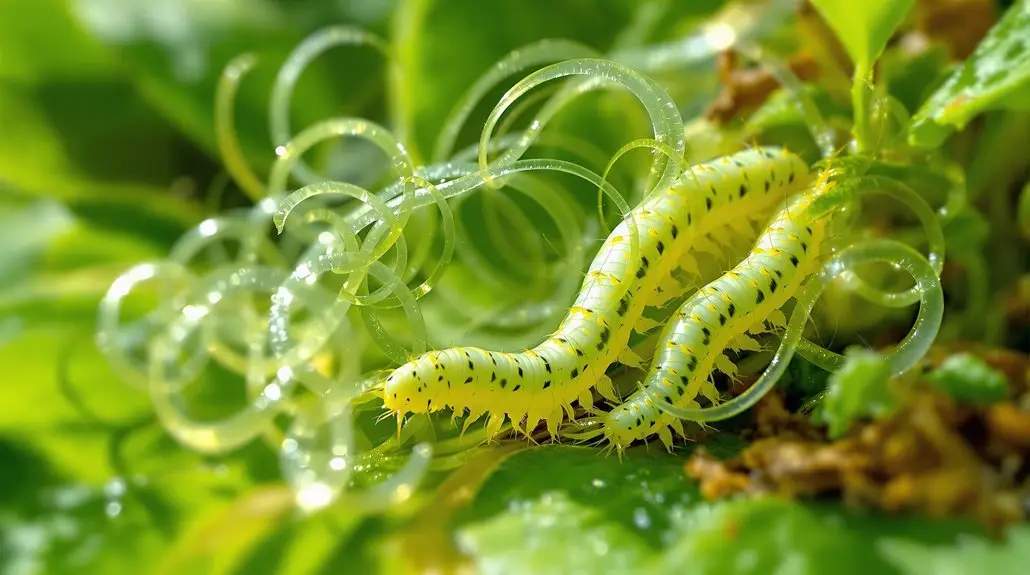
Although rotenone has historically played a significant role as a natural insecticide, its limitations have become increasingly apparent in recent years, particularly concerning its environmental and health impacts. Derived from plants like *Derris* and *Tephrosia*, rotenone acts as a non-systemic insecticide, exhibiting high toxicity to aquatic life, especially fish. While it biodegrades rapidly, the ecological consequences during its short-term use can be significant, particularly in freshwater ecosystems. Moreover, although low concentrations pose minimal risk to humans, agricultural workers face occupational hazards like dermatitis without proper protective measures. Regulatory changes worldwide, banning its use in many countries, highlight growing concerns about its hazardous characteristics and effectiveness. Therefore, understanding rotenone’s limitations is vital for exploring sustainable pest management alternatives. In light of these challenges, many are turning to eco-friendly products as safer options for pest control.
Role of Cinnamon Oil as a Synergist
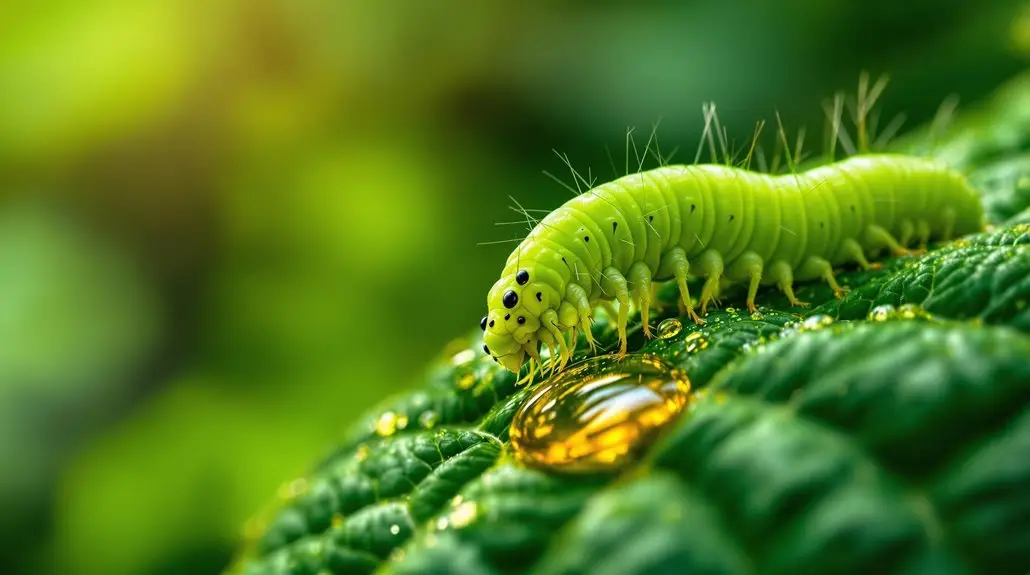
Cinnamon oil plays an important role as a synergist by enhancing the absorption of rotenone, allowing for more effective pest control against Spodoptera litura larvae. By improving midgut penetration, cinnamon oil increases the pesticide’s bioavailability, which is fundamental in maximizing its lethal effects. This synergistic interaction not only boosts rotenone’s efficacy but also facilitates its distribution within the insect’s body, targeting essential systems for greater impact. Additionally, Cinnamon oil’s high purity ensures a safe and effective integration into pest management strategies, further enhancing its role as a potent synergist.
Enhanced Rotenone Absorption
Cinnamon oil increases the retention of rotenone within the insect’s body. The co-toxicity coefficient of rotenone combined with cinnamon oil reaches 213, indicating considerable synergism. The combination raises rotenone levels in crucial areas, such as the brain and ventral nerve cord. This enhancement helps overcome the natural tolerance of Spodoptera litura to rotenone. These findings suggest that incorporating cinnamon oil can greatly improve the effectiveness of rotenone, providing valuable insights for natural products pest control strategies.
Improved Midgut Penetration
When researchers incorporated cinnamon oil into rotenone applications, they found that it greatly improved the penetration of rotenone into the midgut of *Spodoptera litura* larvae. Cinnamon oil acts as a synergist by disrupting the midgut cell structure, which increases intercellular spaces and enhances the insecticidal effect of rotenone. The co-toxicity coefficient for the combination reached 213, showcasing a strong synergistic effectiveness. By increasing membrane permeability, cinnamon oil allows more rotenone to reach critical neurological targets, such as the brain and ventral nerve cord, thereby amplifying its toxicity. Additionally, this combination helps reduce the likelihood of resistance developing in *S. litura*, making cinnamon oil a promising adjunct to traditional insecticides in pest management strategies. The findings suggest that midgut penetration is crucial for enhancing the efficacy of botanical insecticides like rotenone.
Mechanisms of Synergism in Pest Control
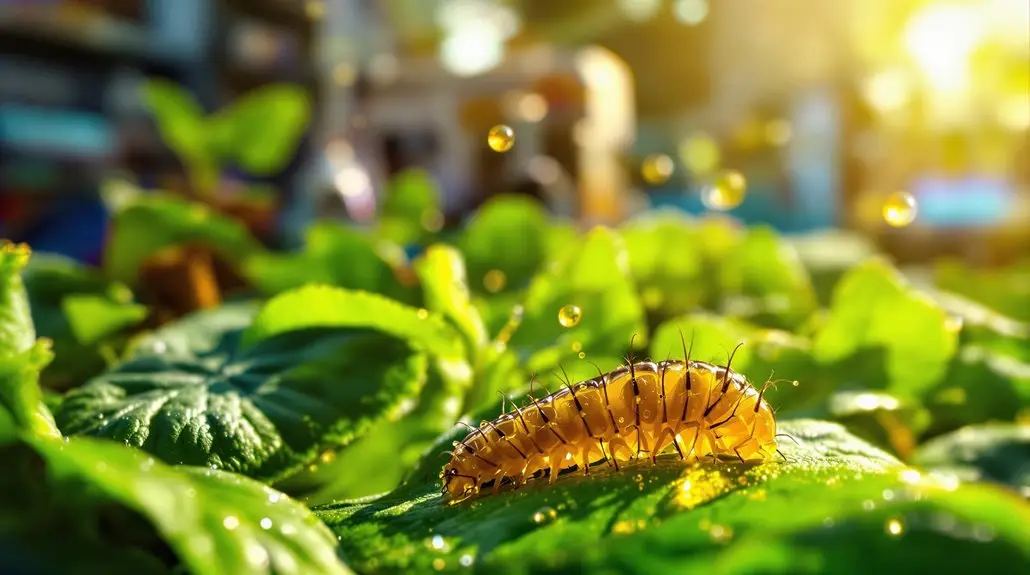
Understanding the mechanisms of synergism in pest control is essential for developing effective strategies to manage pest populations, as various interactions between chemicals can greatly enhance the efficacy of pesticide applications. Several mechanisms contribute to this synergistic effect:
- Enhanced penetration allows for better absorption of pesticides by target organisms. Integrated Pest Management (IPM) combines various control strategies to optimize pesticide use and effectiveness.
- Biochemical interactions occur when different pesticides engage at multiple pathways, increasing toxicity. True synergistic interactions are rare and often observed at high concentrations; cumulative effects should be prioritized in risk assessments.
- Physiological interference affects membrane permeability, facilitating more effective pesticide action.
- Enzyme inhibition prevents detoxification processes, thereby boosting pesticide effectiveness.
Toxicity Data and Experimental Results
In examining the toxicity data, you’ll notice significant differences in LC50 values between rotenone alone and its combination with cinnamon oil. The exposure duration also plays an essential role, with the most pronounced effects observed at the 72-hour mark, highlighting the importance of time in evaluating toxicity. Additionally, the mixture’s toxic evaluation reveals a significant synergistic effect, as evidenced by the substantial reduction in LC50 when cinnamon oil is added, which enhances overall efficacy against *Spodoptera litura*.
LC50 Value Comparisons
Although various insecticides are available for managing Spodoptera litura larvae, the comparative analysis of their LC50 values reveals significant differences in their effectiveness. The LC50 value for rotenone alone stands at 1,081 mg/L, while the addition of cinnamon oil reduces this value to 506 mg/L, showcasing a notable synergistic effect. Key findings include:
- The co-toxicity coefficient for the mixture is 213.52, indicating enhanced toxicity.
- Rotenone’s poor absorption in the midgut limits its effectiveness.
- Cinnamon oil improves rotenone absorption, increasing its insecticidal activity.
- Compared to other botanicals, such as neem oil and nicotine, rotenone shows lower toxicity, suggesting that further exploration of botanical combinations could enhance pest management strategies.
Exposure Duration Effects
| Exposure Duration (Hours) | Toxicity Level (Relative Scale) |
|---|---|
| 24 | Low |
| 48 | Moderate |
| 72 | High |
| Control | Very Low |
This evidence reinforces the importance of considering exposure duration when implementing pest control strategies with rotenone and cinnamon oil. Additionally, the essential oil from cinnamon has demonstrated significant ovicidal activity against Spodoptera littoralis eggs, highlighting its potential in integrated pest management strategies.
Mixture Toxicity Assessment
- Cinnamon oil improves rotenone penetration into the midgut, increasing its effectiveness.
- The combination alters midgut cell spacing and membrane permeability, further enhancing toxicity.
- Neurological targeting is increased as rotenone levels rise in the ventral nerve cord and brain.
- Statistical analyses demonstrate significant differences in toxicity between treatments with and without cinnamon oil.
Physiological Impacts on Spodoptera Litura
Research has revealed that various treatments, including cinnamon oil, considerably influence the physiological health of Spodoptera litura larvae, particularly affecting their midgut and overall growth patterns. Treatments like azadirachtin damage the midgut structure, disrupting nutrient absorption and leading to growth inhibition. Additionally, the introduction of cinnamon oil enhances the penetration of toxins, increasing their overall effectiveness. Antifeedant properties of treatments, such as those from B. brongniartii, reduce feeding behavior, negatively impacting nutritional intake. Furthermore, prolonged exposure alters detoxification enzyme activities, including GST and AChE, which are essential for larval health and development. These physiological changes ultimately affect the larvae’s growth rates, prevent normal pupation, and can lead to increased mortality, underscoring the significance of these findings in pest management research. Notably, the activity of detoxification enzymes in the larvae indicates a heightened response to the combined effects of these treatments.
Implications for Future Pest Management Strategies
As pest populations continue to challenge agricultural productivity, implementing innovative management strategies becomes essential to guarantee sustainable crop protection. Research indicates that integrating various approaches can enhance pest management effectiveness while minimizing environmental impact. Here are some implications for future pest management strategies:
Innovative pest management strategies are vital for sustainable agriculture and reducing environmental impact.
- Biological control methods, like using parasitic wasps, can reduce reliance on chemical pesticides. Additionally, utilizing natural predators can help keep Spodoptera litura populations in check. The use of organic pest control methods, such as those employed by NaturePest, is an effective strategy to reduce chemical dependency.
- Trap crops divert pests away from main crops, effectively managing populations.
- Natural substances, such as neem oil, provide reliable alternatives against pests.
- Integrated Pest Management (IPM) combines multiple techniques, optimizing control and preserving ecosystem balance.
Final Thoughts
Conclusion: A Game-Changer in Pest Control
To summarize, the integration of cinnamon oil with rotenone demonstrates a promising synergistic effect, enhancing toxicity against Spodoptera litura larvae. While rotenone alone exhibits limitations, the addition of cinnamon oil transforms its efficacy, showcasing a potential breakthrough in pest control strategies. This juxtaposition of a traditional insecticide’s shortcomings and the innovative solution provided by a natural synergist underscores the importance of exploring alternative approaches in agriculture, ultimately contributing to more effective and sustainable pest management practices.
Take Action Now with NaturePest Holistic Pest Control! If you’re in South Florida and looking for innovative, environmentally-friendly pest control solutions, consider incorporating natural synergists like cinnamon oil into your strategy. Join the movement towards sustainable agriculture and protect your crops effectively!

